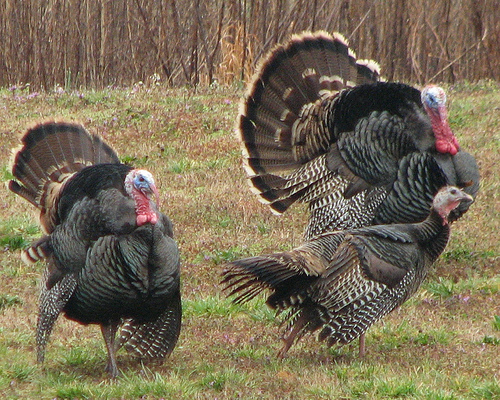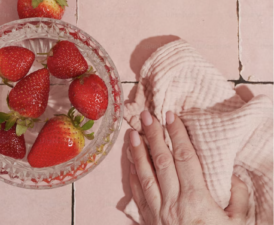One of the wonderful customs that the American settlers here in the Middle East has brought over from the old country is Thanksgiving. Here is my green tribute to them!
In 1621, the Plymouth colonists, led by William Bradford and Wampanoag Indians shared an autumn harvest feast which is acknowledged today as one of the first Thanksgiving celebrations in the colonies. This feast was actually in keeping with a long tradition, rooted in various cultures, of celebrating the harvest and giving thanks for a successful bounty of crops.
But it wasn’t until the 1863 that Thanksgiving was declared a national holiday. Prompted by many editorials by Sarah Josepha Hale, along with the desire to bring together the American people who where bitterly divided as a result of the civil war, President Abraham Lincoln declared it a national holiday.
Today it become the traditional opening to the Holiday Season. Turkey and Turducken are feasted upon along with pies of all kinds; and don’t forget the cranberry sauce and stuffing! It’s enough to make your mouth water!
So how do you green such a celebration of consumption?
Many people will suggest that being green is about being authentic so therefore you should eat what they ate back then. The colonists did not have sugar, that mans no pumpkin pies or cranberry sauce. Hmm, not sounding so fun anymore? Also, sweet potatoes were no common then, so that would be out of the menu, as well as corn, which was all dried up by then.
If you want to go green for your meal then I’d suggest going by the basic food greening rules:
- When you can, go organic. You don’t need to consume pesticides with all your wonderful dishes!
- Cut back on extra meats. While that is probably more authentic to the original feast, the meat industry is one of the more destructive industries to our planet. I’m not saying to go veggie, what would a thanksgiving meal be without a turkey. But going green is about exploring alternatives that contribute to a better path. The original settlers had access to various grains; try a new grain dish and cut back on one of the meaty dishes.
- Waste not. This is probably one of the more authentic traditions you can take on in spirit of the original settlers. The feast was to give thanks for a crop of bounty, so you can bet that they didn’t go and waste the goods that they had received; turkey carcass can be stewed, many side dishes are good the next day. There is no shame in continuing your thanksgiving into the Sabbath!
Enjoy your feasting!
Image Credits: Turkeys by Vicki’s Nature, Cranberry Sauce by 3m1ly





One way I made our Thanksgiving more environmentally friendly was by not leaving any leftovers. Actually this is great information that I will try to implement for the rest of the holidays.